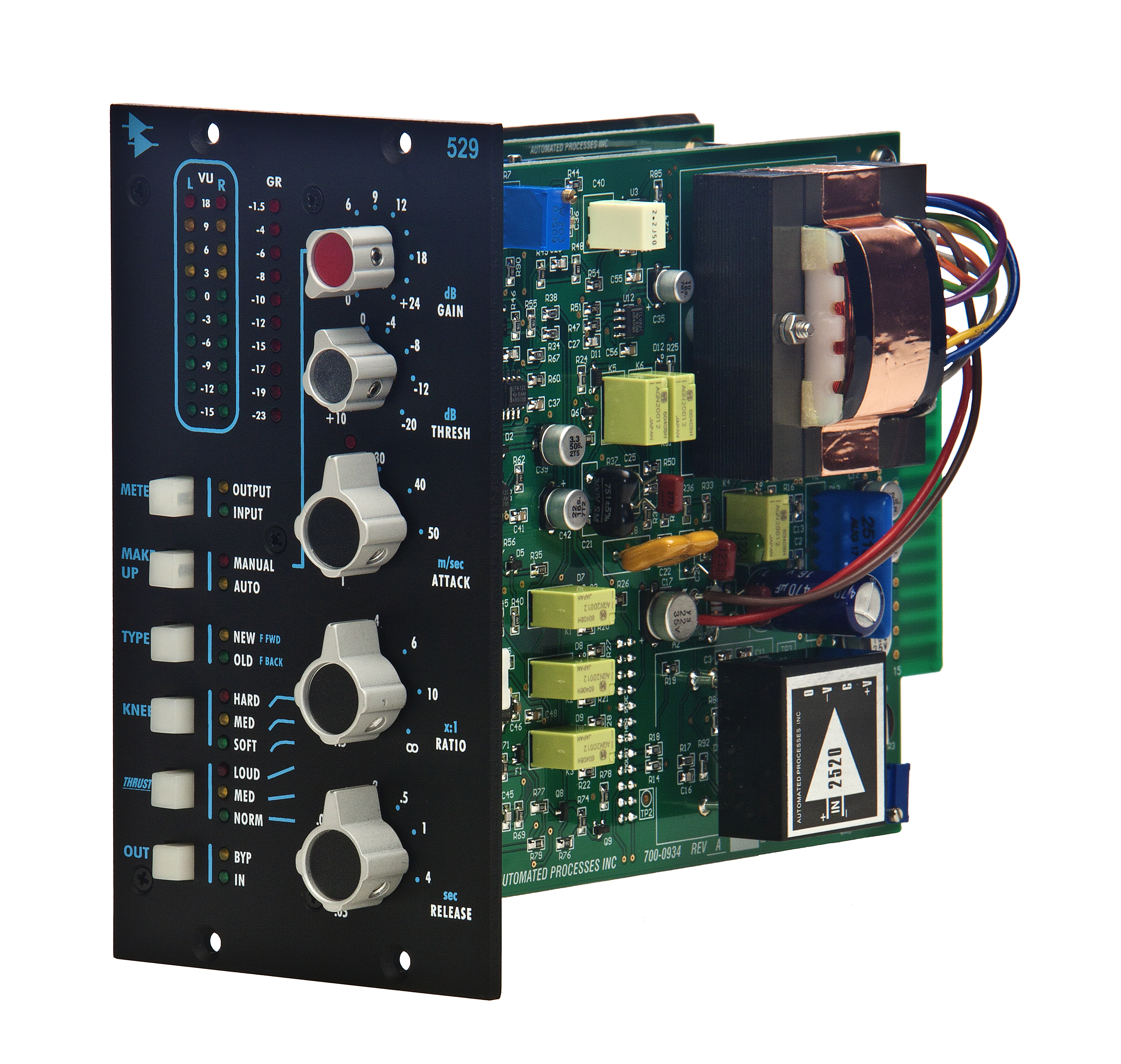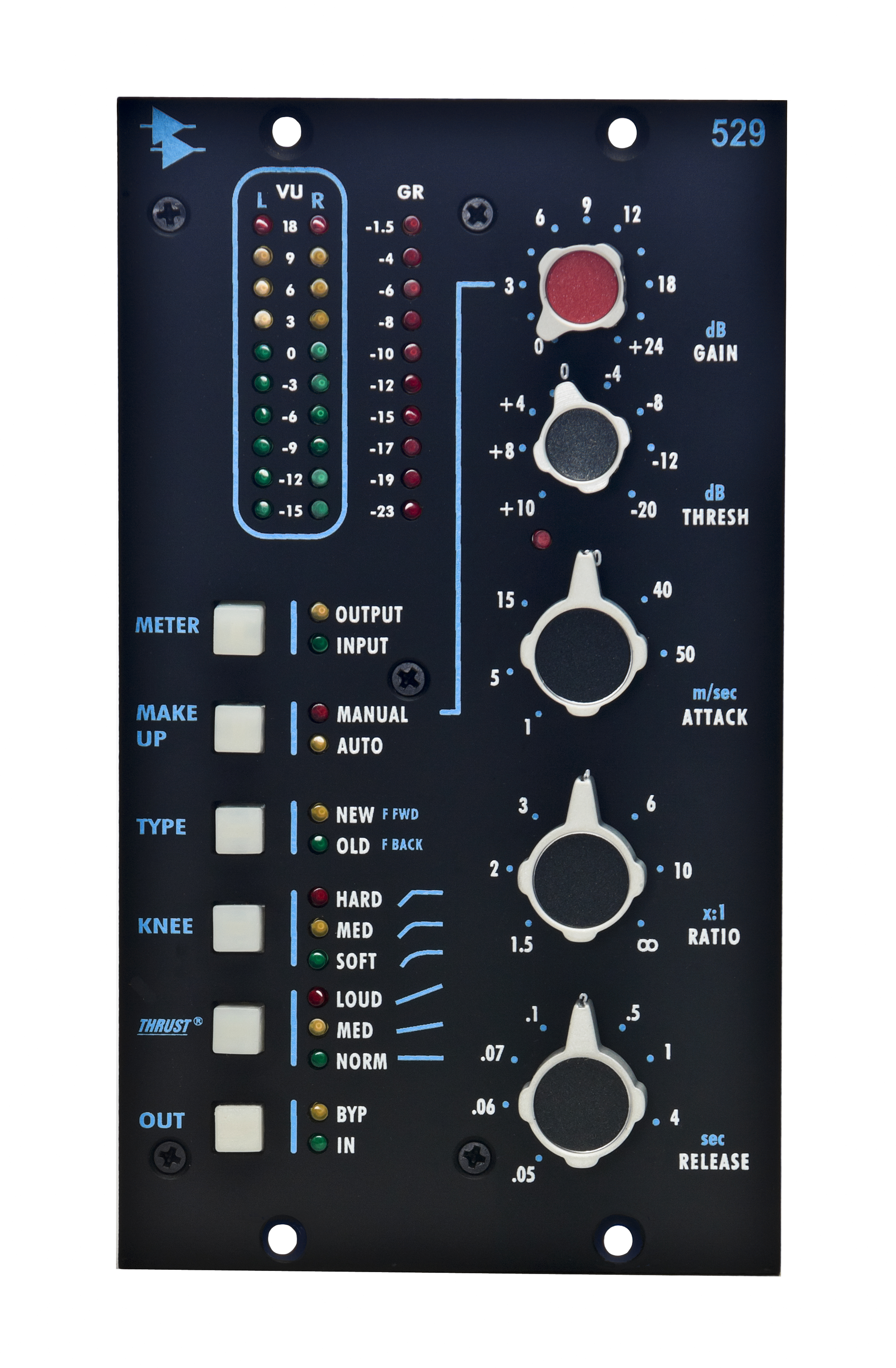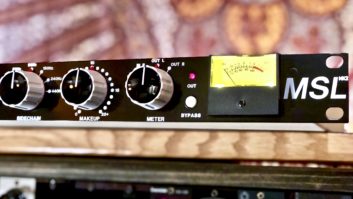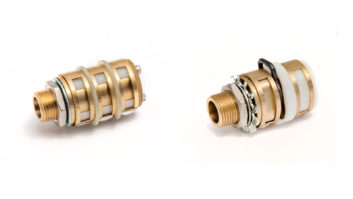It was quite an auspicious debut when Automated Processes showed its first dual-slot 500 Series module, the 529 Stereo Compressor, which borrows significantly from the company’s flagship and immensely sought-after API 2500 Stereo Bus Compressor. The API 529 has most of the same circuitry, including the patented THRUST sidechain filter circuit. But it also has a unique processor designed for individual sources, stereo stems or as a master bus compressor.
Inside are two circuit boards connected to each other and to a third front-panel meter board. The two main boards each use API 2520 amplifier modules (on sockets) and two API 2503 transformers for line-level output. The circuit boards use surface mount technology throughout, and the control pots and switches are solidly connected to the boards, with the pot shafts and toggle arms extending through holes in the front panel. The 529 uses two THAT 2181 VCA chips per channel (four total) for minimal distortion; it draws between 150 and 200 mA slot current spread across the two rear edge connectors. (A side note: since 2005, the API 2500 has used three THAT 2180 VCAs per channel.)

There are 11 controls and switches on the front panel of the 529, yet all are easy to find and adjust. All knob controls are 31-position continuously variable pots with detents that make returning to settings easy.
The control knobs are arranged vertically on the right side of the front panel. From top to bottom are: Gain (Make Up from 0 to +24 dB), Threshold (+10 to -20 dB), Attack (1 to 50 ms), Ratio (ranges from 1.5:1 to ∞:1) and Release Time (50 ms to 4 seconds). Oddly, the silk-screened values for the Attack and Release do not match the maximum 31st detent position of these two controls.
There is a twin 10-segment LED stereo input/output level meter with a range of -15 to +18 dB, and a 10-segment gain reduction meter with a range of -1.5 to -23 dB. A small red LED indicates that the incoming signal is above the Threshold control knob setting.
API 2500 Feature Set
On the left side of the front panel and arranged vertically are six solid switches with adjacent LED indicators. Starting at the top, the Meter source switch toggles between reading either the output or input level. While in bypass mode, the meter automatically locks to reading input.
Below is the Make Up gain switch for either Manual or Auto gain modes. Similar to the Ceiling control in the API 2500 and API 525 compressors, the Auto gain mode fixes VCA gain to unity and allows adjustment of all the controls without the worry of sudden level changes at the output.
Below is the Type switch for selecting the 529’s VCA control source—the pick-off point in the audio path that is used in the sidechain. There are two choices: Feed forward (called New) exemplifies modern compressor design, and in the 529 the stereo input signal after the input’s API 2510 amplifier is used. The Old type (or feedback) uses the output signal from the 2520 output amplifier in the same way many old vintage tube compressors feedback some of the output signal to control gain reduction.
Whichever Type is selected, the audio signal first goes into the THRUST filter and then is combined using a true-RMS power-summing detector to derive the DC control voltage. That control voltage is further contoured by the settings of the threshold, attack, release and ratio controls and then routed to control the VCAs.
The True-RMS power sum of the left and right channels for the detector insures better stereo operation with minimal image shifting. Unlike the 2500 with its link filter and variable link percentage feature, the two channels of the API 529 are 100 percent linked all the time and cannot be unlinked. But that does not preclude using them as two mono compressors.
API The Box: New Small-Format Console, Same Legendary Sound, by Wes Maebe, Nov. 1, 2013
The Knee switch sets the compressor’s transition to compression and has three positions—soft, medium and hard—indicated by green, yellow and red LEDs. Most hardware compressors are fixed knee, or allow switching only between hard or soft knees.
The API 529 uses the company’s patented THRUST circuit— first used in the ATI Paragon console—as it does in the API 2500, API 527 and JDK R22 Dual-Channel compressor. The THRUST filter is placed first in line before the RMS detector and has three very specific filter curve choices

Position 1, or Norm, is flat—no sidechain filter, just like any compressor. Position 2 is Medium, and the curve has a low-frequency roll-off of 3 dB per octave starting at 200 Hz and a 3 dB per octave boost starting at 4 kHz and continuing to 20 kHz. Position 3 is called Loud, and the curve changes to a gradual linear shape that is -15 dB at 20 Hz and rises to a +15 dB boost by 20 kHz. In addition to allowing the bass to be compressed less, the treble boost causes the mid and high frequencies to be compressed more.
Having the three Knee positions, New and Old compressor topologies and the three THRUST curves available has a profound effect on the sound and nature of the API 529 and how it can be optimized to process any source.
Another API 2500 feature adapted for the API 529 is a hard-wired, relay-based bypass button. Rather than two buttons like on the 2500, it has been reduced to a single logic-controlled Out button with green and yellow LEDs indicating the current state of bypass.
If no LEDs are lit, the 529 is in “Soft” bypass mode—audio is running through the module but with the VCA gain held to unity. A momentary poke of the button engages the unit with a green LED. This would be the typical way to toggle the API 529 in and out.
Holding down the Out button causes the yellow BYP LED to light up, and the 529 is in hard-wired bypass—the stereo audio input is routed to the output terminals and the input/output meter is locked to reading input only. The VCA is also held at unity gain in this mode.
API 527 Compressor Review, by Barry Rudolph, March 30, 2010
A quick tap of the button adds in the green IN LED (green and yellow LEDs are both lit), but the 529 is still in hard-wired bypass and the control voltage is now connected to the VCA. Holding down the button engages the 529 into compression with the green LED lit.
This system allows for a seamless, noise-free transition into compression without the bypass relay making/breaking the signal path momentarily. For pre-setting the API 529 before insertion, my only wish would be for all the compressor controls to be active and the gain reduction and input/output meters working.
In the Studio
I tried the API 529 connected as a parallel processor, patched line in/out using a console, or as a delay-compensated hardware insert when mixing in Pro Tools HDX. API supplied a high-current 8P Lunchbox, and one of my first tests was to use it as a drum bus compressor/limiter.
I connected the 529 as a hardware insert in my Pro Tools session on a stereo drum bus (comprising all drum tracks). I liked auditioning between feed forward and feed back compressor Types, but it does (understandably) require a readjustment of some of the controls.
Want more stories like this? Subscribe to our newsletter and get it delivered right to your inbox.
With identical settings, (soft knee and norm THRUST), feed forward sounds tighter, drier and almost clinical, whereas feedback (Old Type) is smoother and more natural, with a vibe-y sound. I heard more of the ambience of the space the drums were recorded in during a mix using the Old type. I ended up heavily compressing using Old type but re-patched in parallel processing mode.
At the studio I patched in the API 529 and tried experimenting with THRUST on a bright female vocal track. I used the New Type for clean, strict and tight control of my overly dynamic singer. With New, I could use faster attack times for controlling edgy vocal transients. Using the Loud THRUST position will compress more on the S’s and fricatives and may require re-adjusting Attack and Threshold. Switching to Old Type on the same vocal made it smoother and less rigidly strict—it is great to have several choices in these situations.
Medium THRUST and Medium Knee are good lead vocal positions, and I found that even with huge gain reductions (15 dB or more on peaks), the sound was always clean and distortion-free, even with faster release times than I normally use.
For this lead vocal and her harmony track, I took advantage of the 529’s stereo-linked channels when I routed those two tracks individually through each channel. The harmony track came in only on the choruses, and I felt like the harmony jelled, blending better with the lead yet remaining clear. As I am patching the 529 in front of the mixer fader, I simply set the musical balance post-compression and it worked great—although sometimes I would also raise/lower the harmony track’s level in Pro Tools using Clip Gain.
This concept also worked for two acoustic guitars: the verse fingerpicking guitar and the light strumming chorus guitar recorded on separate tracks in Pro Tools. I used Trim plug-ins to pre-adjust the gain (and therefore the amount of compression) of the two instruments before going out the insert path(s) to the 529. Again, two disparate acoustic tracks ended up sounding like one player performed the guitar part all in one go, and there was no loss of treble in the guitar sound.
For stereo bus compression I found either Medium or the Loud THRUST settings worked well for an aggressive overall sound on overly bright mixes. Here was a challenge: I couldn’t just roll off high frequencies without detriment, so using Loud THRUST kept the level up without dulling it out.
Something like a dynamic equalizer, the 529 smoothed out the abrasiveness of this mix, kept the low frequencies tight, and I was able to EQ freely post-compression. Like the 2500, the API 529 is a good choice for super-clean and accurate bus or stereo stem compression—for me all the coloration to the sound (whether analog or digitally produced) is already built into my mixes. I am only looking for added density and some peak control from a stereo compressor like the API 529.
With the very best features of the API 2500 Stereo Bus Compressor included, the API 529 is a unique unit worth having for three main reasons: the THRUST circuit, the two compressor Type choices, and the three compressor Knee choices. THRUST is ideal for mastering or for tonally problematic sources that must be dealt with during a mix. And then being able to switch between feed forward and feedback compressor topologies—with an immediate choice of three different compressor knees—is like owning several different compressors all standing at the ready!
Highly recommended!
Product Summary
Company: Automated Processes Inc.
Product: API 529 Stereo Compressor
Website: www.apiaudio.com
Price: $2,195 MSRP
Pros: The sound of an API 2500 in a dual-slot 500 module
Cons: Un-linkable channels







